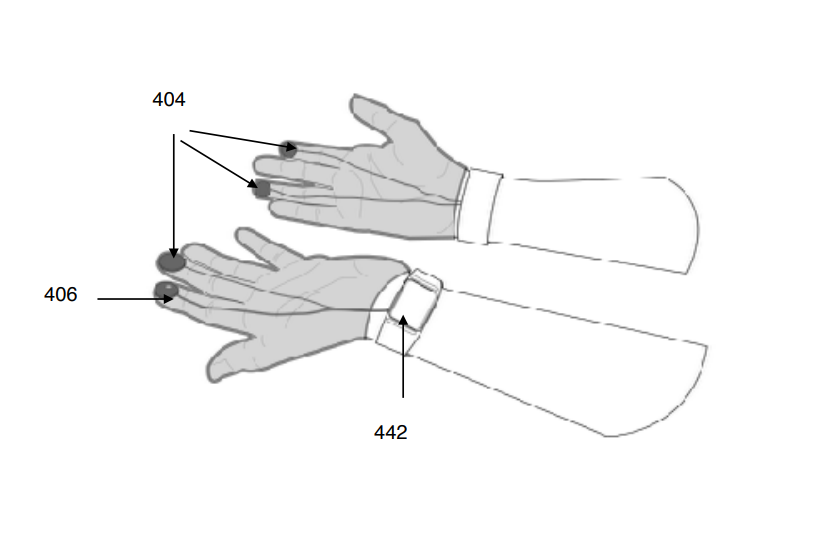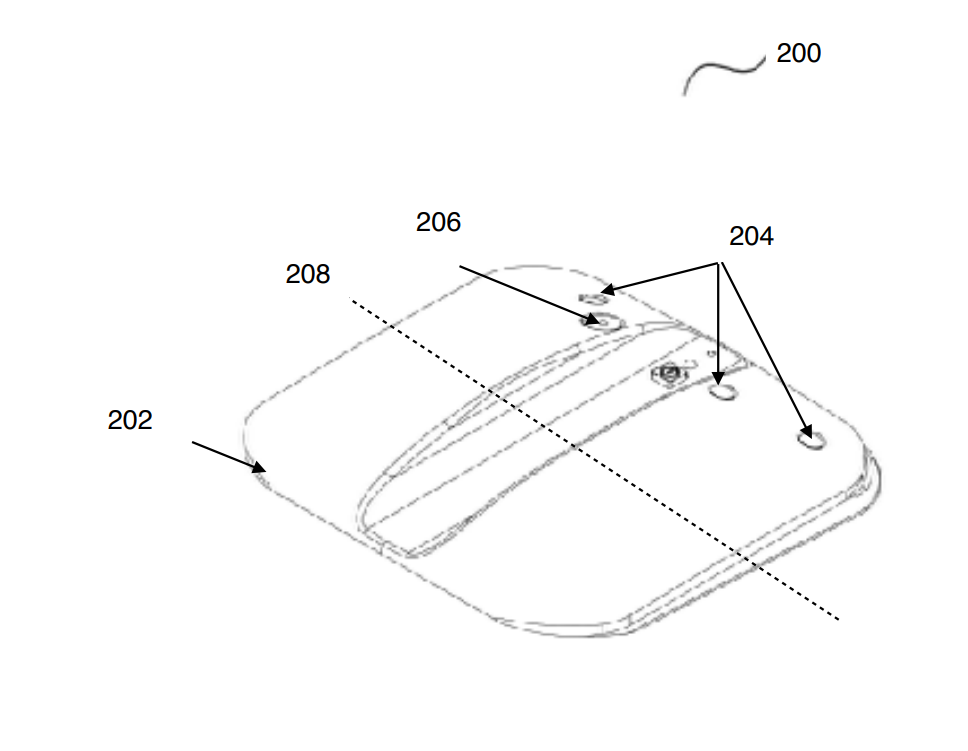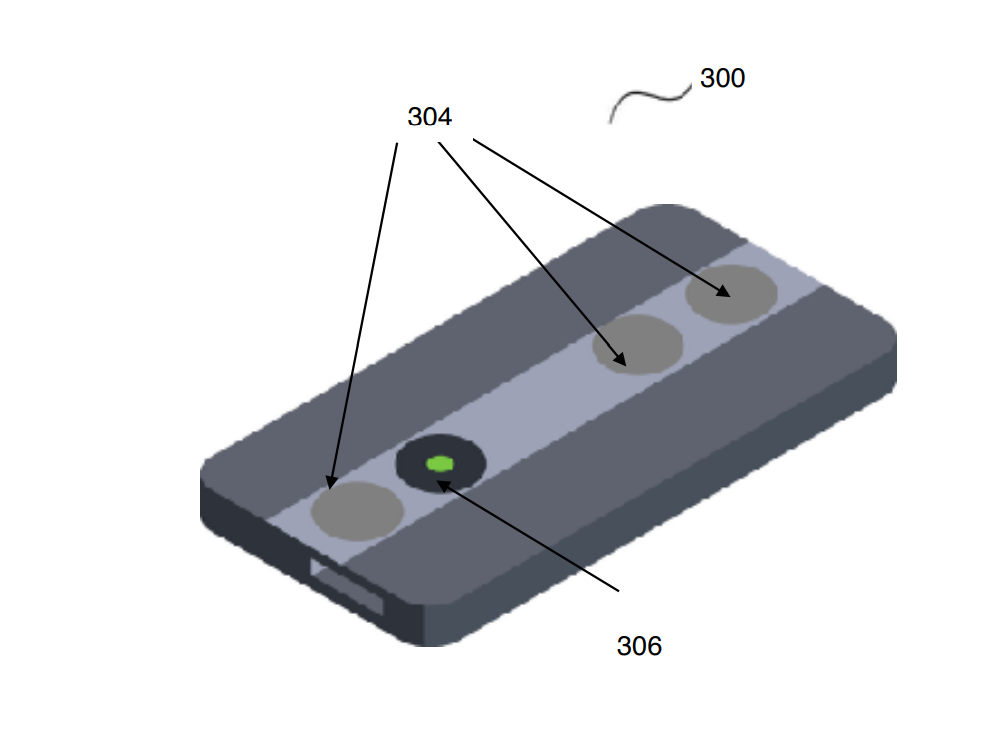The invention discloses a non-invasive, hand-based blood pressure monitoring method using a combination of ECG and arterial pulse sensors to compute pulse transit time, which is then transformed into systolic and diastolic pressure values using user-specific parameters (age, gender, height). This enables beat-to-beat BP estimation across multiple implementations (hand-rest surface, glove, phone cover) and supports both wired and wireless data transmission.
Figure (1) Embodiment of the hand based blood pressure apparatus in a hand-glove implementation; (2) A hand based blood pressure apparatus as per an embodiment herein in a hand-placement-surface implementation; (3) Another embodiment of the hand based blood pressure apparatus in a mobile-phone-cover-surface implementation
Conventional blood pressure (BP) monitoring methods, particularly cuff-based systems, are time-consuming, cumbersome, and uncomfortable, especially for elderly and critically ill patients. These systems require occlusion of arteries, which may lead to damage with prolonged use, and they are unsuitable for continuous or ambulatory monitoring. Many existing digital devices lack accuracy, particularly in special populations (e.g., hypotensive or arrhythmic patients).
- Cuff-less and Non-Invasive Design: This product eliminates the need for inflatable cuffs or artery occlusion, reducing discomfort and enabling safer, repeatable use.
- Beat-to-Beat, Real-Time Monitoring: It measures blood pressure continuously for every heartbeat, allowing dynamic tracking and detection of BP variability.
- Pulse Transit Time-Based Calculation: It derives systolic and diastolic pressure from the time delay between ECG and pulse wave signals more efficiently and less intrusive than traditional methods.
- Multiple Ergonomic Implementations: This product is available as a hand-rest surface, wearable glove, or mobile phone cover, offering flexibility for clinical, personal, or mobile health use.
- Advanced Sensor Materials: This uses tin or graphene-coated ECG sensors that resist oxidation and provide high signal accuracy with minimal interference.
- Personalized Calibration: It accounts for user-specific inputs like age, gender, and height to improve estimation accuracy and adaptability across populations.
- AI-Enhanced Processing: This method applies AI classifiers for data normalization and learning-based calibration, improving precision over time.
- Fast, User-Friendly Operation: It delivers BP readings in seconds without trained operators, ideal for high-throughput screening or self-monitoring.
- Wireless, Modular Architecture: It also supports Bluetooth or Wi-Fi data transmission; easily integrates with phones, tablets, or remote servers.
- Low-Cost, Scalable Solution: It maintains a cost comparable to traditional devices while offering greater capabilities for mass deployment and continuous use.
The invention has been developed in three ergonomic and user-friendly prototype configurations, each tailored for specific use cases and environments:
- Hand-Placement Surface: A curved surface with embedded ECG and pulse sensors where users rest their palms. It includes adjustable antimicrobial handprint templates to ensure proper contact.
- Glove-Based Implementation: Sensors are integrated into gloves using conductive fabric. It is suitable for long-term or ambulatory monitoring, and ideal for patients with anxiety or sensitivity to traditional devices.
- Mobile Phone Cover: Sensors are embedded in a phone case, allowing quick readings when the hand is placed on the cover. It is useful for portable, on-the-go BP monitoring.
Each prototype includes a transmission module (for signal acquisition and digitization) and a computation module (for waveform processing and BP estimation).
The technology is currently being developed through an early-stage startup, focusing on prototype refinement, performance validation, and potential commercialization pathways.
4
This technology addresses the need for affordable, comfortable, and accessible BP monitoring. It reduces dependency on skilled personnel and bulky equipment, enabling large-scale screenings at health camps, rural clinics, and public hospitals. The non-invasive nature enhances patient comfort, while real-time, beat-to-beat readings support early diagnosis and continuous monitoring of cardiovascular health. The system can be life-saving for populations with limited access to healthcare infrastructure, and for those requiring regular monitoring due to chronic conditions.
- Mobile Health (mHealth) and Telemedicine: Integrates with smartphones or portable devices for remote patient monitoring
- Clinical, Emergency & Primary Care: Rapid, non-invasive BP checks in hospitals, ICUs, clinics, rural centers, and mobile units; ideal for screenings, triage, and early diagnosis without trained staff
- Health Kiosks / Health-ATMs: Used in self-service booths for public health screening and diagnostics
- Home Monitoring and Elderly Care: Allows users to track BP regularly without discomfort or supervision
- Sports Medicine and Fitness Centers: Helps monitor cardiovascular response during training or rehabilitation
- Psychological Testing and Lie Detection: Tracks BP and pulse changes in response to stimuli during assessments
- Insurance and Wellness Programs: Supports risk profiling and preventive health checkups in corporate or policy settings
- Defense and Security Agencies: Monitors stress or physiological responses in high-risk or interrogation scenarios
Geography of IP
Type of IP
201621026154
540631



